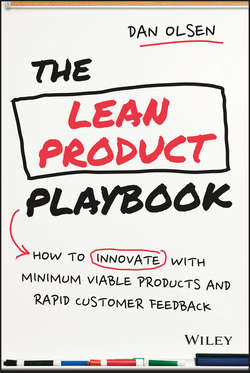Читать книгу The Lean Product Playbook - Olsen Dan - Страница 18
На сайте Литреса книга снята с продажи.
Part I
Core Concepts
Chapter 2
Problem Space versus Solution Space
Using the Solution Space to Discover the Problem Space
ОглавлениеCustomers are also not likely to serve you their problem space needs on a silver platter. It's hard for them to talk about abstract benefits and the relative importance of each – and when they do, it's often fraught with inaccuracies. It's therefore the product team's job to unearth these needs and define the problem space. One way is to interview customers and observe them using existing products. Such techniques are called “contextual inquiry” or “customer discovery.” You can observe what pain points they run into even if they don't explicitly mention them to you. You can ask them what they like and don't like about the current solutions. As you form hypotheses about the customer needs and their relative importance, you can validate and improve your hypotheses using these techniques.
The reality is that customers are much better at giving you feedback in the solution space. If you show them a new product or design, they can tell you what they like and don't like. They can compare it to other solutions and identify pros and cons. Having solution space discussions with customers is much more fruitful than trying to explicitly discuss the problem space with them. The feedback you gather in the solution space actually helps you test and improve your problem space hypotheses. The best problem space learning often comes from feedback you receive from customers on the solution space artifacts you have created.
Problem space and solution space are an integral part of the Product-Market Fit Pyramid, as shown in Figure 2.1. Your product's feature set and UX live in solution space – they're what customers can see and react to. The other three layers of the pyramid live in problem space. The important interface between problem space and solution space occurs between your value proposition and your feature set. It is, of course, within your control to change your feature set and UX as you like. Unlike customers and their needs, which you can target but can't change, value proposition is the problem space layer over which you have the most control.
Figure 2.1 Problem Space versus Solution Space
As Dave McClure of 500 Startups said, “Customers don't care about your solution. They care about their problems.” Keeping problem space and solution space separate and alternating between them as you iteratively test and improve your hypotheses is the best way to achieve product-market fit. The Lean Product Process gives you step-by-step guidance on how to do that. Let's jump into the first step of the process: identifying your target customer.
